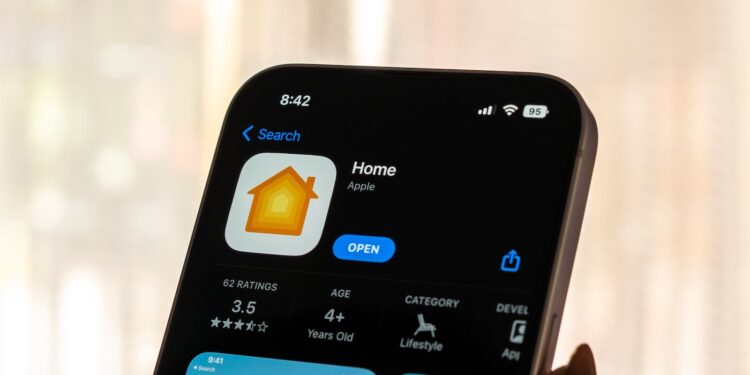Apple is serious: If you're still using the old HomeKit architecture, it's time to act. Support for the current version of Apple Home will end this fall. The latest beta version of iOS 18.6 shows that some households will be automatically converted to the new architecture. Other users will have to take action themselves. Here's what's happening, what's changing, and how you can prepare.
Apple's HomeKit system controls many smart homes. Lights, cameras, thermostats, and much more are controlled via the Home app. A major technical update is now underway. Apple is not only providing new features, but is also phasing out the old architecture. Those who don't switch over in time risk disruptions to everyday life. While the switch is voluntary, in many cases it will soon be implemented automatically. Therefore, you should know exactly what the current status is.
Why Apple is implementing the update
The new HomeKit architecture was first introduced in December 2022. It was intended to make the system faster and more stable, but it caused problems. Users reported that devices were disappearing, invitations to share your home weren't working, and HomeKit Secure Video was crashing. Apple pulled the update shortly thereafter. The new architecture was released again in March 2023 with iOS 16.4. Since then, it has worked much more reliably. Users with many HomeKit or Matter devices will particularly benefit. In addition to improved performance, the update also brings new features: guest access for other users, a history of activities in the home, and support for robot vacuum cleaners.
What happens with iOS 18.6
With the introduction of iOS 18.6, the old architecture will be officially discontinued. Apple is currently providing information in beta versions that automatic upgrades are planned. This means that some households will be automatically switched to the new architecture, while others will have to do it manually. It is currently unclear how Apple will decide who will be automatically switched over and who will not. The criteria for this upgrade are unknown. However, one thing is clear: those who fail to switch over in time risk disruptions to smart home operation. Devices can then no longer be controlled correctly, automations fail, and notifications are no longer delivered.
The problem with old devices
One important point: The new architecture is only compatible with newer operating system versions. You need at least iOS 16 or macOS Sonoma to use the new HomeKit version. Anyone using older devices will no longer be able to control their HomeKit settings via these devices starting this fall. This particularly affects iPads or Macs, which no longer receive updates. So, if you're using an older Apple device as a home hub, you should check whether it's still compatible.
How to perform the upgrade manually
If you don't want to wait, you can activate the new architecture yourself. Here's how:
- Open the Home app on your iPhone or iPad
- Tap the three dots in the top right corner
- Select “Home Settings”
- Go to “Software Upgrade”
If your setup is compatible, you'll be offered the upgrade. Make sure all your devices are up to date before you begin.
Apple is changing – better be one step ahead
With this update, Apple is retiring the old HomeKit architecture. Some users will be automatically upgraded, while others will have to take action themselves. Those who don't react risk limitations in their smart home. You should check whether your Apple devices are compatible and upgrade via the Home app while you still have control. This way, you can ensure that your automations, devices, and notifications continue to function as usual this fall. Looking for accessories? Our Amazon Storefront is your destination for high-quality products, including HomeKit! (Image: Shutterstock / sdx15)
- Apple under pressure: US antitrust lawsuit remains in place
- Apple postpones new features for users in the EU
- New MacBook with A18 Pro chip discovered in Apple code





